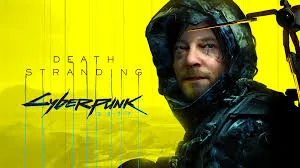What if humanity’s future isn’t just one path, but two diverging roads leading to the same destination? Cyberpunk 2077 and Death Stranding might seem worlds apart – one drowning in neon excess, the other suffocating in desolate silence – yet they’re actually two sides of the same coin, exploring how humanity evolves (or devolves) from our current crisis point.
After hundreds of combined hours in both games, this connection becomes impossible to ignore. Here’s why these seemingly opposite dystopias are mirror reflections of humanity’s potential futures.
Table of Contents
Tale of Two Futures: Cyberpunk 2077 Comparison
| Aspect | Cyberpunk 2077 | Death Stranding |
|---|---|---|
| World State | Overcrowded, neon chaos | Barren, isolated landscapes |
| Threat Type | Corporate control, rogue AIs | Ecological disaster, supernatural entities |
| Core Theme | Technology overwhelming humanity | Human connection vs. isolation |
| Setting | Night City (urban dystopia) | Post-apocalyptic America/Australia |
| Atmosphere | Hedonistic excess | Meditative solitude |
| Gameplay Focus | Combat, choice-driven narrative | Traversal, rebuilding connections |
The Coin They Share: Evolution of Human Society
Both games obsessively examine where humanity stands right now in 2025 and extrapolate two possible catastrophic outcomes:
Cyberpunk 2077’s Vision: We surrender to technological acceleration. Corporations replace governments, AI threatens consciousness itself, and the line between human and machine blurs into nonexistence. The hyperreal world makes distinguishing truth from fiction impossible. Technology promised liberation but delivered enslavement.
Death Stranding’s Vision: Nature violently rejects humanity. The Death Stranding event unleashes Beached Things (supernatural entities causing voidouts) and Timefall (rain that accelerates aging), making Earth fundamentally hostile to human life. We’re scattered, isolated, struggling to maintain basic connection in a world that actively kills us.
Why This Matters Beyond Gaming
These aren’t random sci-fi fantasies. Both developers looked at humanity’s current trajectory and identified critical pressure points:
Cyberpunk 2077 Questions:
- What happens when corporations gain more power than nations?
- Can humanity maintain identity as technology integrates deeper into our bodies?
- Will AI evolution threaten or transcend human consciousness?
- How does constant digital stimulation affect authentic human experience?
Death Stranding Questions:
- What if ecological collapse isn’t gradual but catastrophic and immediate?
- Can humans maintain society when physical connection becomes deadly?
- How do we rebuild community after total societal breakdown?
- What defines humanity when survival requires constant isolation?
The Shared DNA: Beyond Surface Differences
Both Prioritize World-Building Over Action: Yes, you shoot and fight in both games, but that’s not the point. The real experience lies in exploring meticulously crafted environments that whisper (or scream) about humanity’s fate.
Humanistic Themes Despite Dystopia: Both narratives express hope within horror. V’s struggle in Cyberpunk 2077 and Sam’s reconnection efforts in Death Stranding demonstrate that individual human agency matters even when systems collapse.
Detailed Environmental Storytelling: Random NPC conversations, discarded emails, environmental details – both games hide profound commentary in peripheral spaces. The main quest is just the entrance; side content reveals the soul.
How to Experience These Games Properly
Don’t Rush the Main Quest: Both games suffer when played as mission checklists. Instead:
Cyberpunk 2077: Explore Night City’s fringes. Talk to random NPCs. Read environmental text. Side quests like Delamain’s taxi company, the Peralez conspiracy, and character arcs (Judy, River, Panam) contain the game’s deepest truths.
Death Stranding: Let yourself feel the isolation. The “boring” walking simulator criticism misses the point entirely – that meditative traversal through hostile landscapes creates emotional space to contemplate connection’s value.
The Crossover That Proved the Connection
Death Stranding’s PC version included Cyberpunk 2077 crossover content featuring V’s mask, Johnny Silverhand’s prosthetic arm, and themed missions. This wasn’t just marketing – it acknowledged the thematic kinship between these dystopias.
For comprehensive sci-fi game analysis and dystopian narrative guides, explore our gaming hub. Play both titles on Steam.
The Verdict: One Coin, Two Faces
Cyberpunk 2077 asks: “What if we give technology everything?”
Death Stranding asks: “What if nature takes everything back?”
Both answers lead to the same conclusion: humanity struggles, connection becomes precious, and individual choices determine whether we transcend or succumb to catastrophe.
These games aren’t competing visions – they’re complementary warnings disguised as entertainment. Play one to understand technological dystopia. Play the other to comprehend ecological collapse. Play both to see the complete picture of humanity’s fork in the road.
The future is nigh, and these games are our roadmap to what might await.
FAQs
Are Cyberpunk 2077 and Death Stranding actually set in the same universe?
No, they’re separate fictional universes, though a Death Stranding easter egg in Cyberpunk 2077 and the crossover content in Death Stranding’s PC version playfully suggest connections. The “two sides of the same coin” concept is thematic, not canonical. Both examine humanity’s future from different catastrophic angles – technological excess (Cyberpunk) versus ecological disaster (Death Stranding) – but they explore parallel concerns about corporate power, AI consciousness, human identity, and society’s fragility. The crossover content was mutual respect between Kojima Productions and CD Projekt Red, not shared universe confirmation.
Which game should I play first if I want to understand their shared themes?
Start with Cyberpunk 2077 if you prefer familiar gameplay structures (action RPG combat, dialogue choices, urban exploration) and faster narrative pacing. The technological dystopia feels more immediately relatable to current 2025 concerns about AI, corporate overreach, and digital identity. Move to Death Stranding afterward if you want the meditative, contemplative counterpoint that challenges conventional game design. However, if you appreciate experimental gameplay and philosophical depth over action, start with Death Stranding – its slower pace and isolation mechanics create emotional space for reflection that makes Cyberpunk 2077’s chaos feel more meaningful by contrast.
